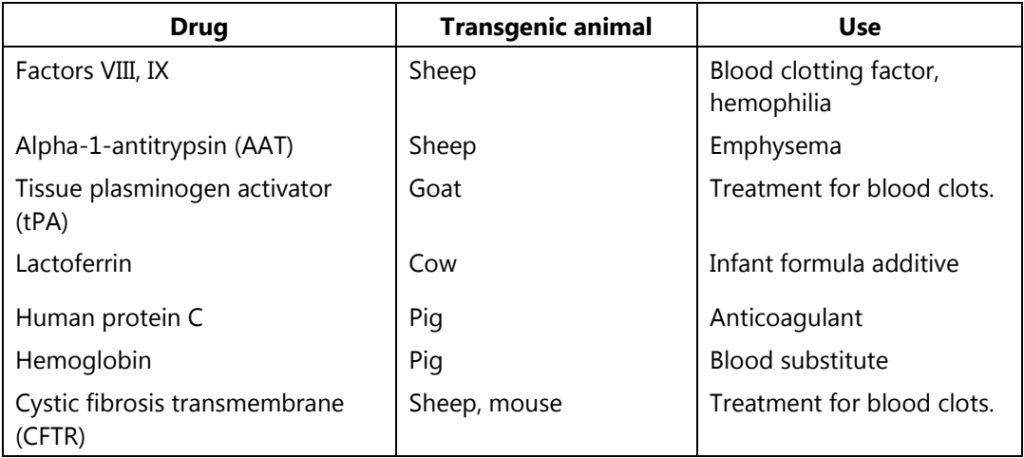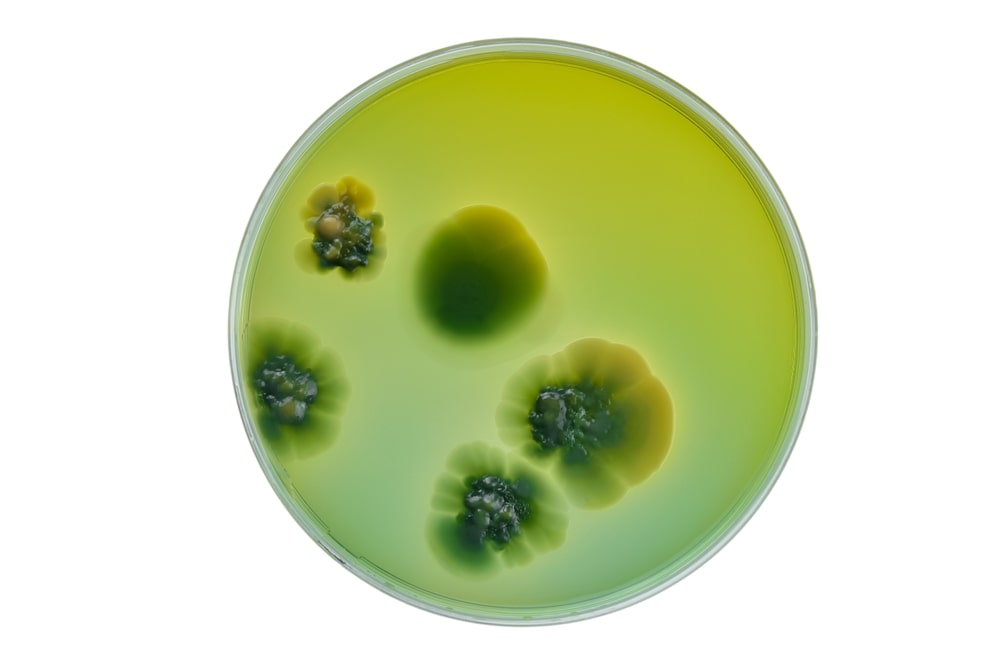Applications Of Cell Cultures: Transgenesis is a new technology for altering the characteristics of animals by directly changing genetic material. It has been gaining application among biotechnologists since the development of transgenic ‘super mice’ in 1982 and the development of the first mice to produce a human drug (tissue plasminogen activator) in 1987. Transgenic sheep and goats are being used to produce recombinant proteins secreted in milk. In pharmaceutical development, transgenic animals and plants may be used as ‘bioreactors’ for chemical production. The transgene is introduced into a fertilized ovum or cells of an early-stage embryo by microinjection, manipulation of embryonic stem cells, or using retroviral vectors.
The first step in developing a transgenic organism is to identify, prepare and purify the DNA coding of the particular trait desired. The transgene contains not only the gene of interest but a promoter sequence that controls the gene’s function. The purity of the DNA construct is important to avoid toxic effects on the embryo. Transgenes can be introduced into animals by three methods. Each involves gene transfer into a fertilized ovum or cells of an early-stage embryo. Modified embryos are implanted into the uterus of a host animal where they develop into genetically modified offspring.
Microinjection: The microinjection method was first documented in 1966. This is the most commonly used method to produce genetically modified animals. In this method, eggs are harvested from superovulated animals and fertilized in-vitro. A microtube is used to hold the fertilized egg and an extremely fine needle is used to inject DNA directly into the nucleus.
The embryo is then implanted in the uterus of a surrogate mother. After birth, the animals are tested to determine if they have the transgene and corresponding desired traits. This method is commonly used to produce transgenic fish, insects, birds, and mammals.
Retroviral vectors: Retroviruses can be used to infect cells of an early-stage embryo before implantation. Viruses are effective vectors for DNA, however, transgene size is limited to 8 to 10 kilobases. The offspring are chimeric and transmission only occurs if the retrovirus integrates into some of the germ cells. Embryos that carry the transgene can be frozen and stored for implantation.
Embryonic stem cell: Embryonic stem (ES) cells are pluripotent cells isolated from the inner cells mass of early embryos. Embryonic stem cells can be genetically modified in the laboratory and incorporated into blastocysts for implantation. An embryonic transfer is then conducted resulting in the production of a chimeric animal. In the production of the chimeric mouse, the ES cells of the black mouse intermingle with that of an albino. The microinjected embryo is transplanted into the uterus of a surrogate mother. The progeny born has a black and white skin color. A such mouse was called a chimera or chimeric mouse. Transgenic mice that carry a knockout gene are called knockout mice. Now it is possible to select and knockout (remove) a gene and make genetic modifications in embryonic cells and mice. These animals are particularly useful in the study of genetic control of the developmental process.
Recently it has become possible to extend the nuclear transplantation procedure, originally carried out in amphibians to mammals. The first mammal to be cloned in this way was ‘Dolly’. Ian Wilmut and his colleagues at Roslin Institute, Edinburgh, Scotland developed the first mammalian clone ‘Dolly’ in 1996. ‘Dolly’ is the first transgenic lamb to be produced by nuclear transfer. She was produced from fetal fibroblast cells that were modified by the addition of the human gene coding for blood clotting factor IX together with a marker gene. Nuclear transfer has been used successfully in cloning several mammalian species including sheep, mice, cattle, cats, and monkeys.
The animal production industry is gradually reaching revolution due to the development of the genetic map, knowledge of the expression of genes, and techniques for large propagation. Transgenic animals are used as tools in research and for the production of recombinant proteins. The main applications of transgenic animals are described as follows:
Studying gene function: Transgenic expression is not only used to breed animals that have specific traits but also to breed animals that are lacking specific genes. This technique is called knockout or gene targeting. Transgenic technology was perfected using mice in the early 1980s. Knockout mice that lack functional forms of specific genes are produced which provide information about the function of the knocked-out gene. This technique allows scientists to target specific genes for inactivation and mutagenesis.
Molecular pharming or pharmaceutical production: Transgenic sheep, goats, and cattle are being used as ‘bioreactors’ to produce important human proteins in milk. Milk is produced in large quantities and can be collected without harm to the animals. Livestock is used to produce medicines and nutraceuticals. Transgenic animals mainly produce the desired drug at high levels without endangering their health and pass their ability to produce the drug at high levels to their offspring. Proteins commonly produced from transgenic animal includes the blood clotting protein Factor IX, lactoferrin, human protein C, alpha−1−antitrypsin, etc. Drugs developed in transgenic animals are listed in Table.1. Human drugs purified from animal milk or blood are likely to require exceptional levels of safety testing before animal and human health concerns are addressed to the satisfaction of consumers.

Biomedical research model: Transgenic animals can be created which simulate human diseases in which defective genes play a major role. Human mutant genes are inserted into mice and other animals, causing them to suffer from human diseases. Such transgenic animals are used as a disease model for investigations into the development of a particular disease and medicine to prevent it. These animal models facilitate the identification of chemically induced mutations, and gene expression and are instrumental in identifying signal transduction pathways and hormonal factors that modulate the activity of genes. Transgenic animals are used as a model for diseases such as cancer, autoimmune diseases, diabetes, cardiovascular, Alzheimer’s disease, neurological diseases, AIDS, cystic fibrosis, hypercholesterolemia, etc. Transgenics are also important research tools for studying environmental pollutants, bone marrow, germinal cell mutations, and target organ susceptibility.
The mouse is the most widely used animal model in transgenic research. The genetic makeup of the mouse resembles that of humans, rapid reproduction rates and relative ease of genetic manipulation are the important characteristics for animal models mainly observed in mice. Rat, sheep, cows, goats, and pigs are commonly used as research models and for the production of protein-based pharmaceuticals.
Transgenic animals are playing a major role in the drug development process and the potential benefits to human and animal health.
Make sure you also check our other amazing Article on : Factors Affecting Preservative Efficacy
